If you have been following my project through it’s development you will notice the final product is pretty different from the initial idea. I changed the project from a upcycled wooden desk light to a laser cut cardboard hanging light. This was done because the wood that I had available was not great and Josh had some worried about bringing it into the shop. After that I decided to make a hanging light out of cardboard that was going to be recycled because it is readily available and an easy material to work with. I made a few designs in Solid works and finally decided on a design that matched by aesthetic that I was happy with. The light consists of trapezoidal panels in a circular pattern around an exposed filament light bulb. The panels were positioned in a way that allowed light to project down and a little bit out while not directly exposing the bulb to people who look at it. The intent was for the light to only illuminate a smaller area underneath the light to create a small space that would feel intimate and cozy.
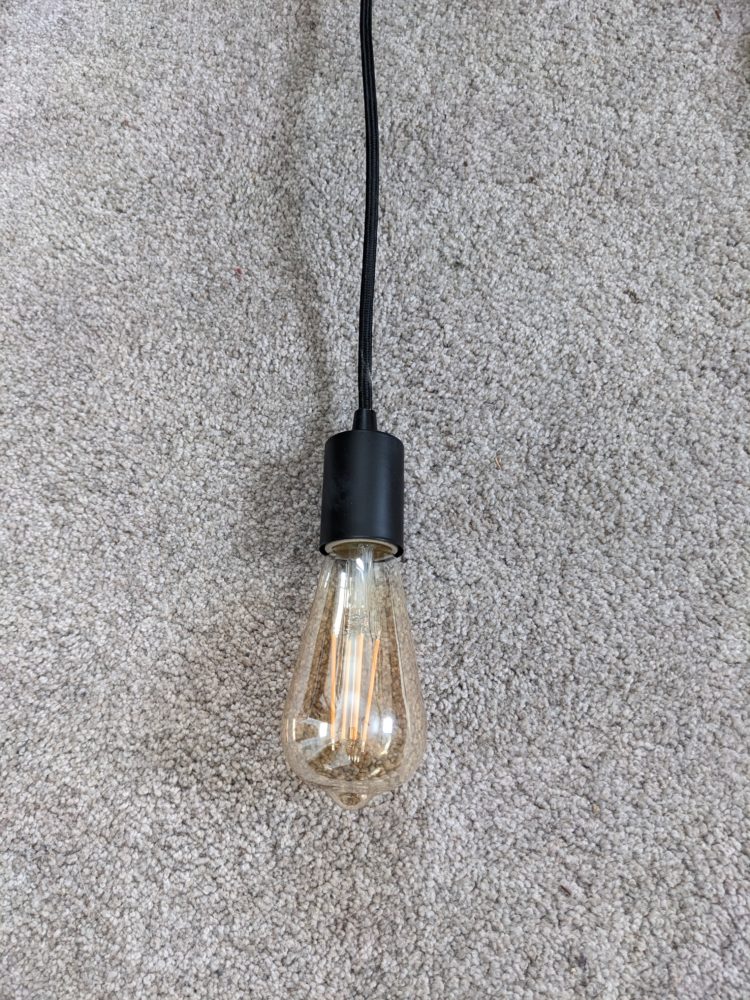
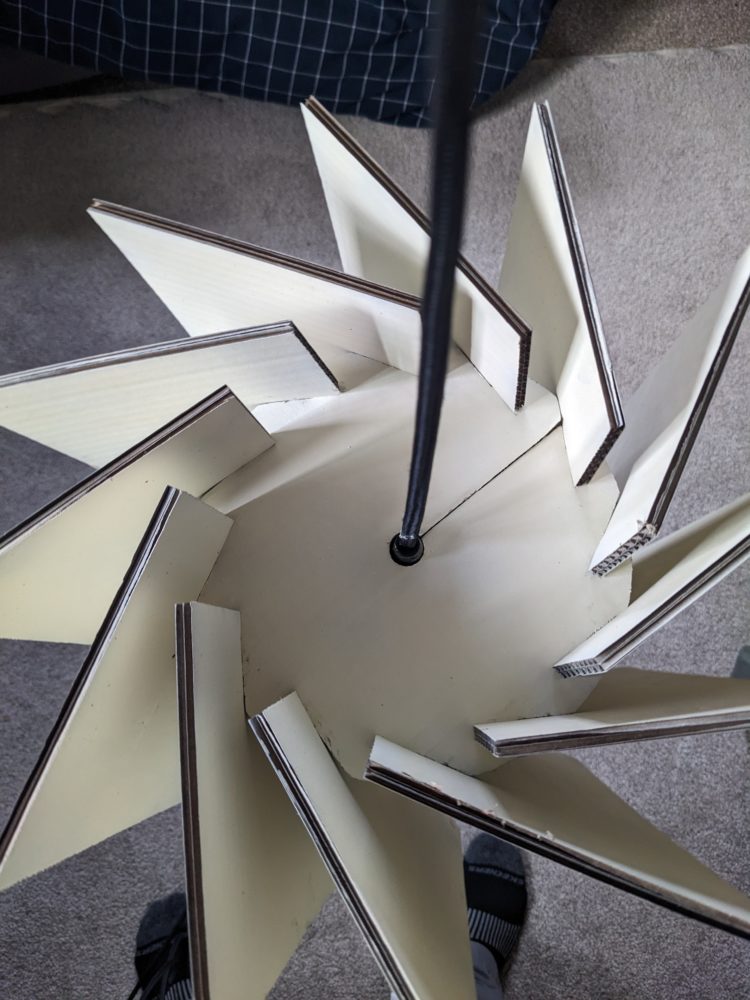
I bought a single light on a string online to use as my base for the hanging light, and used a spare light bulb that I had around the house that happened to be exactly what I was wanting to put into the light anyway. I used the top of the bulb mount to hold up the cardboard piece that each of the panels slotted into. This gave the light enough structure to hold up the panels while also being removable.
Once the design was done, I exported the Solid works files to Corel where it could then be laser cut in the ITLL using recycled cardboard that I found in the recycling outside. I had some trouble with the cardboard catching on fire in the laser cutter, so I had to remake a few parts which cost a bit more material. Once everything was cut out and not on fire, I mocked it up to see how the fitment and final shape of the light was. Luckily, I liked how it came out as it matched the CAD pretty well.
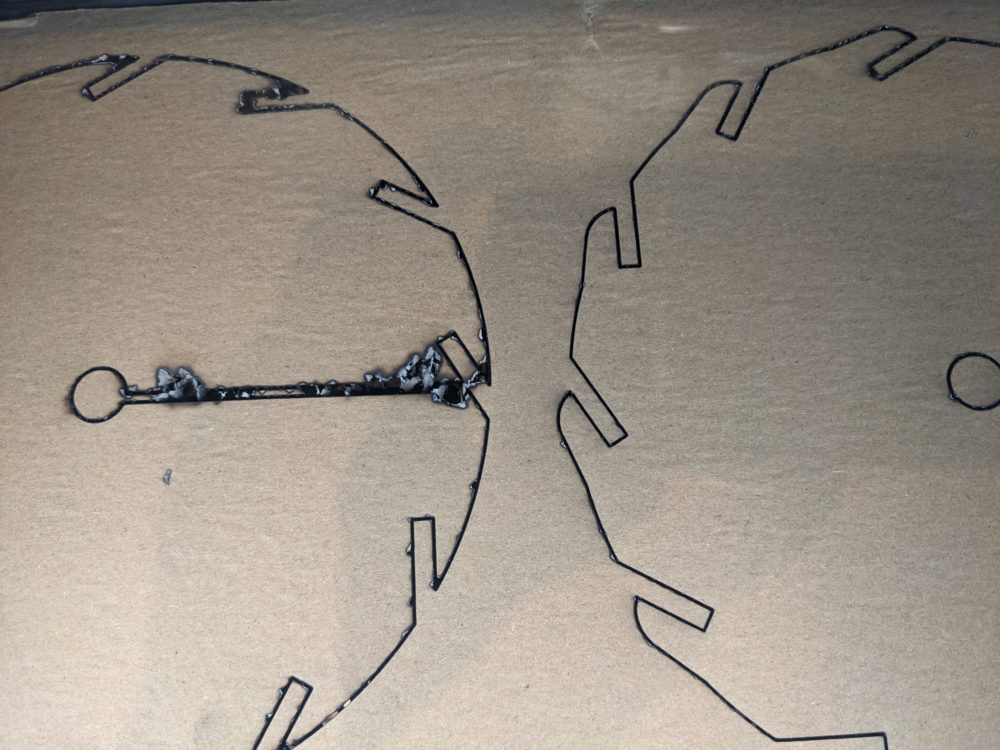
Since the cardboard was from random boxes, most of the panels had some sort of ink on them from either text or images that were on the boxes. And, the raw cardboard look wasn’t really to my liking because it looked unfinished as well as made the light look darker as a whole. I decided to paint each of the pieces a matte cream color because it would brighten up the aesthetic and also compliment the warm light from the exposed filament bulb well. The panels are almost entirely square which keeps with the aesthetic which has strong straight lines and 90 degree corners. The bottoms are cut out to give the light a taper in the bottom to help project the light out and down where I wanted it to go. In the end I think it adds a cool look to the light while also being functional.

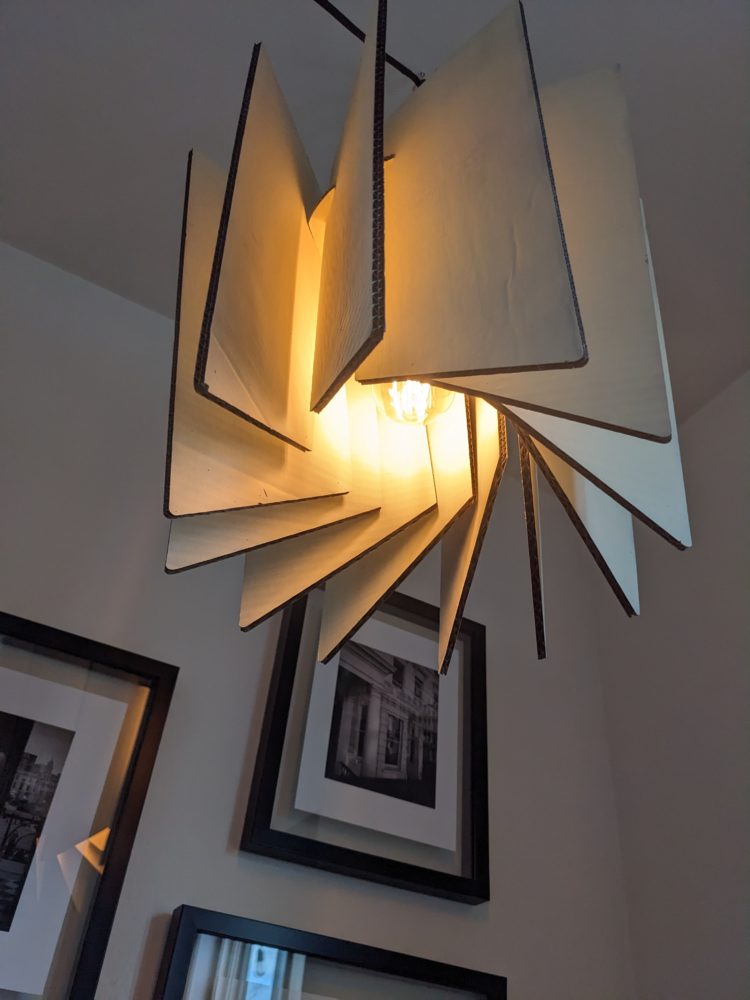
There was a slight issue with the slots in the panels having just a little bit of play in them where they would flop down a bit and look somewhat droopy. This made some of the gaps in the side smaller than they were designed to be, and closed the light bulb in a bit more that I would have liked. If I go back and work on this project some more I probably will go buy some better material like MDF or thin plywood which would be stronger than the cardboard.

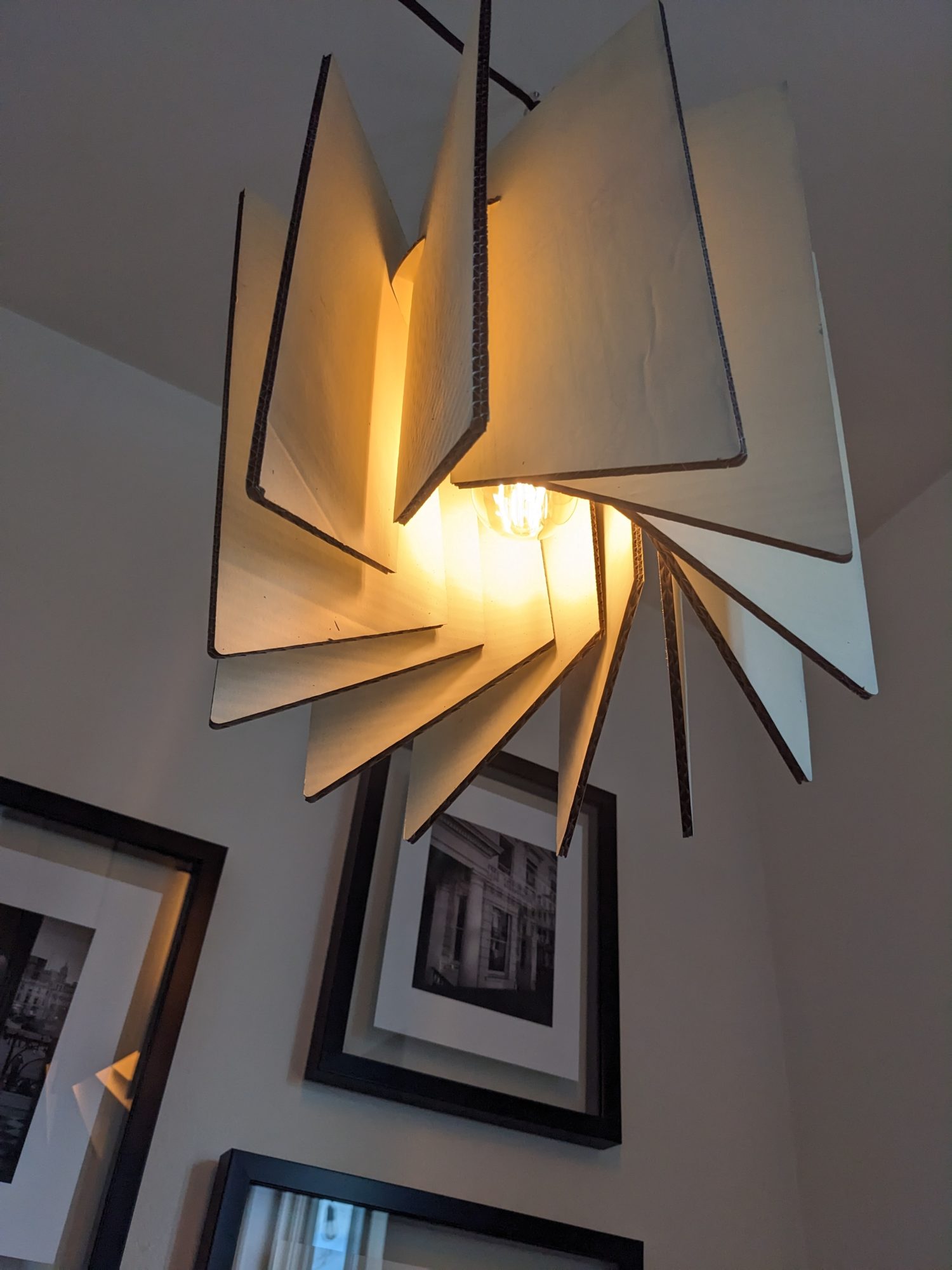
3 Comments. Leave new
Hey Cam, I really like how this project turned out. I have always wanted to make a lamp or light fixture. Specifically I like how you used a downsloping angle to give a sense of movement to the piece, another cool thing is that you can use the light for a long time. Great work!
Sweet project Cameron. This looks like a design I’d find out of one of the design books pasted around during class. I think you achieved your aesthetic with this. If you did this again, would you change the design at all?
Cameron I think this lamp is beautiful and the design is very clever. I think it fits the minimalist aesthetic because the shapes are simple and the overall lamp (even if it has more parts than some other lamps) it looks minimalist to me. Have you considered building it using different materials (for example wood)? Another cool thing (but this doesn’t affect the lamp design) might be using smart bulbs that can change colors.